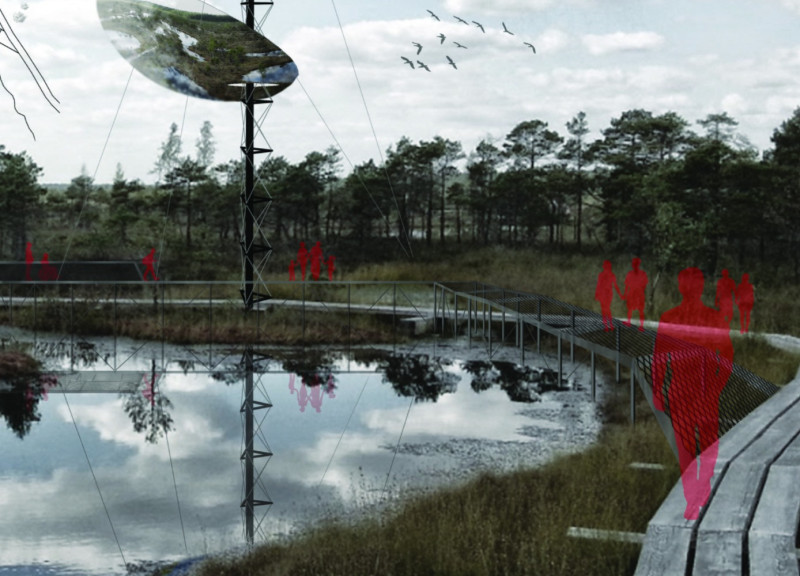5 key facts about this project
The Reflection of Kemeri explores how people observe and interact with their surroundings. Situated in a landscape that combines natural beauty with architectural form, the design focuses on the relationship between light and space. This project engages viewers through the use of reflective surfaces, fostering a connection between architecture and nature.
Spatial Organization
- The arrangement of spaces within the design prioritizes movement and sensory perception. Different heights and angles encourage observers to navigate through the structure, leading to moments of reflection and contemplation. By incorporating both convex and concave elements, the design alters visual perspectives, creating an immersive environment that emphasizes the act of seeing.
Material Composition
- Steel is a key material in the framework of the project. The use of a steel mast and an interior structure contributes to its strength and stability. Polished stainless steel surfaces serve to enhance the reflective qualities of the design, allowing light to play across the spaces and change throughout the day. These selections provide not only durability but also a means for the building to respond visually to the environment.
Integration with Landscape
- The design integrates closely with the surrounding landscape, emphasizing a relationship that enhances both the architecture and the natural setting. By aligning the structure with the contours of the site, the project amplifies reflections and encourages engagement with nature. This intentional relationship offers users a unique experience that deepens their connection to the area.
Reflection as Experience
- Reflective surfaces invite people to engage with their surroundings in a new way. As viewers observe, they see not only the landscape but also a mirror of themselves and the world around them. This focus on observation instills a sense of wonder and curiosity, making the experience of being in the space actively engaging. Every angle and reflection contributes to a rich narrative that resonates with the essence of the site.


























